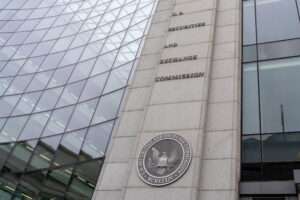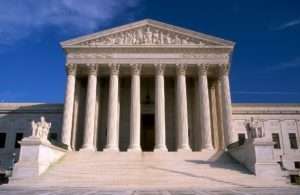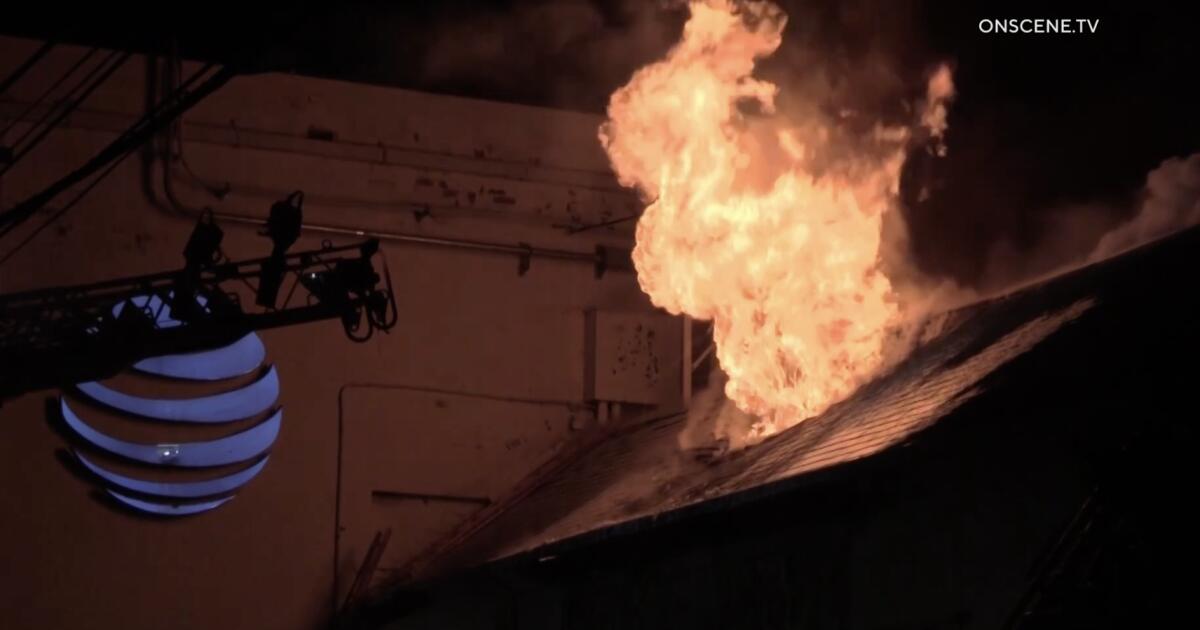Revealed August 5, 2024
By Patrick Boyle, Company Accountability Lawyer on the Middle for Worldwide Environmental Regulation, and Charles Slidders, Senior Lawyer, Monetary Methods on the Middle for Worldwide Environmental Regulation.
The US Supreme Court docket just lately issued choices in 4 instances that might profoundly weaken the executive state, foreshadowing widespread dysfunction for federal companies and the huge regulatory regimes they oversee, together with federal protections safeguarding public well being and the atmosphere.
The US federal authorities has greater than 439 companies and subagencies, every with its personal sphere of accountability and experience. These companies are accountable for implementing, making use of, and imposing a big selection of laws throughout areas reminiscent of air high quality, clear ingesting water, schooling, vitality, monetary markets, meals security, and healthcare — laws that tremendously influence American lives.
These Supreme Court docket choices will undoubtedly be used to limit the power of federal companies to interpret, apply, and implement the legal guidelines and laws essential to the real-life, day-to-day implementation of our federal authorities’s most essential capabilities.
Supreme Court docket Choices Impacting Federal Businesses
The Supreme Court docket issued 4 choices this previous time period (2023-2024) that problem the authority of federal companies:
Loper Shiny Enterprises v. Raimondo: Overturned the longstanding Chevron doctrine, which gave deference to federal companies. Courts will now not be required to defer to the specialised technical experience of federal companies and their cheap interpretation of ambiguous statutory phrases or unclear definitions supplied by Congress.
SEC v. Jarkesy: Dominated that the Securities and Change Fee (SEC) should present defendants with a jury trial in enforcement actions in search of civil penalties, limiting the company’s anti-fraud enforcement capabilities.
Nook Submit v. Federal Reserve: Extends the statute of limitations for challenges to company actions, resulting in extended authorized uncertainty, even for decades-old laws.
Ohio v. EPA: Halted enforcement of the Environmental Safety Company’s (EPA) “Good Neighbor” rule — which aimed to implement ozone air air pollution requirements — as a result of the company had not supplied an ample rationalization of its plan. This case alerts the Supreme Court docket’s willingness to hinder federal company efforts to manage air pollution on a nationwide foundation.
Chevron Deference and Its Demise
The arrival of the doctrine of Chevron deference, established in 1984 by means of Chevron. v. NRDC, and its demise in Loper Shiny Enterprises v. Raimondo each concern environmental regulation.
Chevron v. NRDC addressed the EPA’s interpretation and software of a regulation promulgated beneath the Clear Air Act. The Supreme Court docket upheld the EPA’s interpretation of an ambiguous provision of the regulation and, in doing so, held that courts should defer to an company’s cheap interpretation of ambiguous statutory phrases — enter “Chevron deference.” For the previous forty years, Chevron deference has been the cornerstone of administrative regulation, and Chevron v. NRDC has been cited at least 18,000 instances in different courtroom choices.
The Supreme Court docket’s resolution in Loper Shiny Enterprises v. Raimondo abruptly ended Chevron deference, considerably shifting energy from federal companies to the judiciary. The case involved the regulation of the industrial fishing of overfished Atlantic herring pursuant to the Magnuson-Stevens Fishery Conservation and Administration Act. The Supreme Court docket thought-about the slim query of whether or not industrial fishers of Atlantic herring may be made to shoulder the price of internet hosting authorities fisheries screens on board their vessels.
In its resolution, the Supreme Court docket dominated that courts — not companies — are to find out all questions of regulation, together with the one finest interpretation of ambiguous phrases, even when these phrases are scientific and technical. Justice Elena Kagan’s dissent warned that almost all resolution would depart courts to find out questions far exterior their experience, together with problems with environmental safety, reminiscent of how you can outline a “distinct inhabitants section” of endangered “vertebrate fish or wildlife” pursuant to the Endangered Species Act.
Shifts in Energy and Ongoing Influence
The elimination of Chevron deference essentially shifts energy from Congress and the manager to the judicial department. By upsetting the long-held equilibrium stewarded by the Chevron doctrine, Loper Shiny Enterprises v. Raimondo will prohibit the federal authorities’s operations and hinder environmental regulation.
Presidents rely upon the executive state to use their coverage preferences, and Congress enacts statutes with the understanding that companies will make the most of their expertise and experience to moderately interpret ambiguities. With out Chevron deference, the Supreme Court docket can have the ultimate say over coverage questions and, within the phrases of Justice Kagan, turns into the nation’s self-appointed “administrative czar.”
Loper Shiny Enterprises v. Raimondo is already having a profound influence: as of August 5, 2024, fifty-nine courts have cited the choice, and litigants in 120 different instances have cited it in courtroom filings. The choice is getting used to stymie ESG funding regulation, reopen federal waters after an emergency closure to guard North Atlantic proper whales, contest solar energy facility certifications as a qualifying supply of different vitality, problem necessities for water heaters to fulfill effectivity requirements, and defend in opposition to the usage of a tire manufacturing chemical whose runoff precipitated a “taking” of protected fish species.
Not solely does Loper Shiny Enterprises v. Raimondo current a severe impediment to the applying and interpretation of federal environmental safety guidelines, however, along with SEC v. Jarkesy, it would additionally restrict the power of companies to implement these guidelines.
Local weather Disclosure Guidelines and ESG Investing after Loper Shiny Enterprises v. Raimondo and SEC v. Jarkesy
Loper Shiny Enterprises v. Raimondo and SEC v. Jarkesy will affect the continued problem to the SEC’s Local weather Disclosure Guidelines, presently pending earlier than the Eighth Circuit Court docket of Appeals. The SEC’s Local weather Disclosure Guidelines — albeit insipid — require bigger corporations to reveal materials Scope 1 (direct) and Scope 2 (oblique) emissions info. These guidelines have been challenged by twenty-five states, two Large Oil commerce teams, and the US Chamber of Commerce.
The first foundation for the problem to the foundations is that it represents an unauthorized enlargement of the SEC’s statutory rulemaking authority, making it extremely vires (past its authorized powers). In overturning Chevron deference, the Supreme Court docket held that rulemaking companies, such because the SEC, should display
unambiguous congressional authority to create a rule, growing the burden on these administrative companies to show they’ve the authority to implement such laws. This poses an issue for the SEC, which adopted the Local weather Disclosure Guidelines beneath the investor safety laws of the Securities Act and the Securities Change Act. The SEC should display that it has unambiguous statutory authority to make climate-related laws beneath these legal guidelines.

Even when the Eighth Circuit upholds the Local weather Disclosure Guidelines, their enforcement faces extra obstacles as a consequence of SEC v. Jarkesy. Failure to reveal materials Scope 1 or 2 emissions may violate the Local weather Disclosure Guidelines and probably represent securities fraud beneath SEC Rule 10b-5. The SEC can search civil penalties for securities fraud, and because the Dodd-Frank Act, it may achieve this within the company’s administrative courts.
Within the SEC v. Jarkesy case, the SEC introduced an enforcement motion in opposition to funding adviser George Jarkesy, Jr. for securities fraud, leading to a civil penalty of $300,000 and a disgorgement of $685,000 imposed by an administrative regulation choose. Nevertheless, the Supreme Court docket dominated that the US Structure’s Seventh Modification entitles defendants to jury trials for any statutory declare that’s authorized in nature — even these introduced by the federal government — and impacts the defendants’ personal rights. The SEC v. Jarkesy resolution considerably limits the SEC’s skill to fight securities fraud involving deceptive and misleading local weather disclosures by eradicating the choice of administrative proceedings and requiring enforcement actions be litigated by means of the prolonged and costly jury trial course of.
The choice critically undermines the power of not simply the SEC to carry enforcement actions, however, as famous by Justice Sonia Sotomayor in her dissent, SEC v. Jarkesy can even prohibit the enforcement capabilities of over two dozen different federal companies that may impose civil penalties in administrative proceedings. The EPA is one such company that, till SEC v. Jarkesy, may impose civil penalties in administrative proceedings when environmental safety laws have been violated, however it now faces limitations as a result of resolution.
The Final Nail within the Coffin? An Prolonged Statute of Limitations for Difficult Company Guidelines
The Administrative Process Act supplies {that a} social gathering has six years to problem an company regulation, and it was sometimes presumed that the six-year limitation started to run when the company issued the regulation. Nevertheless, in Nook Submit v. Federal Reserve, the Supreme Court docket held that the limitation interval begins when the social gathering difficult the rule is definitely injured by it. Accordingly, as a substitute of the clock beginning at publication, it begins at a unique time for every potential litigant.
This resolution signifies that longstanding company laws could now be topic to challenges by events who’ve solely just lately been impacted by the rule. The Nook Submit v. Federal Reserve resolution dramatically expands the universe of present laws weak to authorized challenges by eliminating present time restrictions on when courtroom challenges to laws may be introduced.
Nook Submit v. Federal Reserve will precipitate authorized uncertainty and undermine the predictability of the regulation and company laws.
Good Neighbors No Extra: Ohio v. EPA
Whereas the main focus has been on the above talked about instances, one other resolution has obtained much less consideration however is simply as vital for federal environmental regulation. Ohio v. EPA inhibits the EPA’s skill to manage air air pollution on a nationwide foundation.
Below the Clear Air Act’s “good neighbor” rule, the EPA required twenty-three states — beneath a single implementation plan — to scale back air air pollution touring to downwind states, thereby requiring huge polluters in upwind states to scale back emissions.
The Court docket’s majority acknowledged the hurt that elevated ozone ranges could cause, together with triggering and exacerbating well being issues and damaging vegetation, however held that the plan was doubtless “arbitrary or capricious” as a result of the EPA had not “supplied a ‘passable rationalization for its motion[,] together with a rational connection between the details discovered and the selection made.’” Based on the bulk, the EPA failed to clarify how the plan’s value thresholds and emission limits had been impacted by the variety of states included within the plan.
The Court docket cut up five-four. Justice Amy Coney Barrett — a dependable member of the Court docket’s conservative clique — dissented and noticed:
“Given the variety of corporations included and the timelines for overview, the Court docket’s injunction leaves giant swaths of upwind States free to maintain contributing considerably to their downwind neighbors’ ozone issues for the subsequent a number of years…”
An software for a keep was granted, pending the ultimate willpower of the deserves of the case. Considerably, Justice Barrett famous that Ohio v. EPA is “fact-intensive and extremely technical” and — considerably at odds with the bulk opinion she joined in Loper Shiny Enterprises v. Raimondo — that the Court docket “ought to proceed all of the extra cautiously in instances like this one with voluminous, technical information and thorny authorized questions.”
Certainly, in Ohio v. EPA, the Court docket supplied a preview of the post-Chevron difficulties courts will confront in grappling with technical questions finest left to company consultants. Justice Neil Gorsuch, the writer of the bulk opinion, demonstrated that judges aren’t finest positioned to find out extremely technical non-legal questions: he was clearly confused in regards to the pollutant in query. The unique opinion referred to “nitrous oxide” (laughing fuel) 5 instances as a substitute of “nitrogen oxide,” an air pollutant that the EPA’s coverage aimed to scale back. After the error gained traction on social media, the Court docket issued a corrected opinion.
Uncertainty for US Environmental Laws
 The Loper Shiny Enterprises v. Raimondo and SEC v. Jarkesy choices imply that federal companies is not going to obtain deference in deciphering their enabling laws and now not have the power to implement these laws earlier than administrative regulation judges. After Nook Submit v. Federal Reserve, it’s unclear when — or if — company laws can be free from potential authorized challenges. And, in Ohio v. EPA, the Supreme Court docket inhibited the EPA’s skill to manage air air pollution on a nationwide foundation.
The Loper Shiny Enterprises v. Raimondo and SEC v. Jarkesy choices imply that federal companies is not going to obtain deference in deciphering their enabling laws and now not have the power to implement these laws earlier than administrative regulation judges. After Nook Submit v. Federal Reserve, it’s unclear when — or if — company laws can be free from potential authorized challenges. And, in Ohio v. EPA, the Supreme Court docket inhibited the EPA’s skill to manage air air pollution on a nationwide foundation.
These current Supreme Court docket choices symbolize a seismic shift within the regulatory panorama and pose a selected risk to the federal authorities’s environmental safety regime. By limiting the ability of federal companies and increasing the statute of limitations for difficult company actions, these rulings introduce vital uncertainty and will present an avenue for winding again environmental laws which can be already on the books. The total influence of those choices will unfold over time, however their fast impact is a considerable weakening of federal regulatory energy and a collection of latest instruments for these in search of to problem federal regulation.



![[Out Now] Lopez on Choice of Forum Clauses in Asia – Conflict of Laws](https://i2.wp.com/conflictoflaws.net/wp-content/plugins/pdf-print/images/pdf.png?w=350&resize=350,250&ssl=1)















